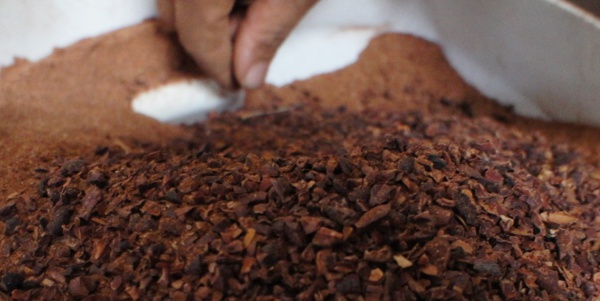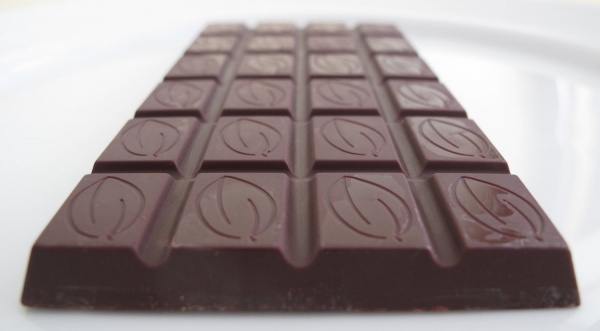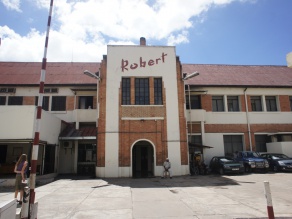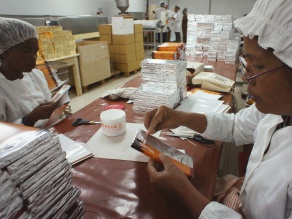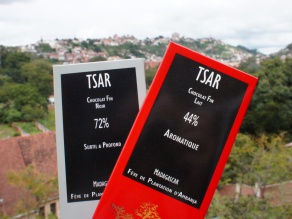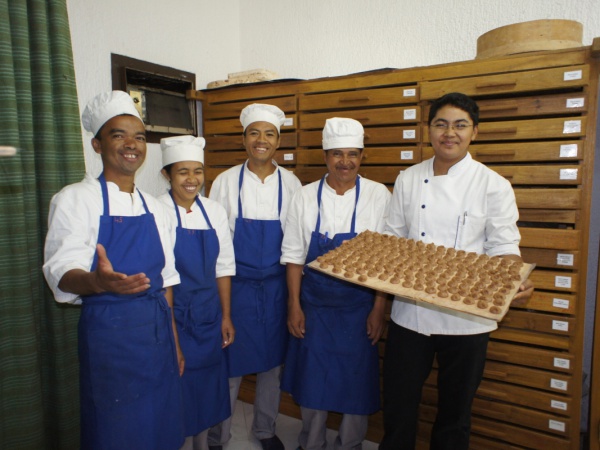Madagascar Chocolate
Madagascar is not widely known for making chocolate, at least not like the chocolate nations of Switzerland and Belgium. But as many chocolate experts would agree, Madagascar is a high quality cocoa producing nation boasting two major bean-to-bar chocolate factories, making especially dark and delicious chocolates from naturally organic cacao grown in the northwest Ambanja region of the country.
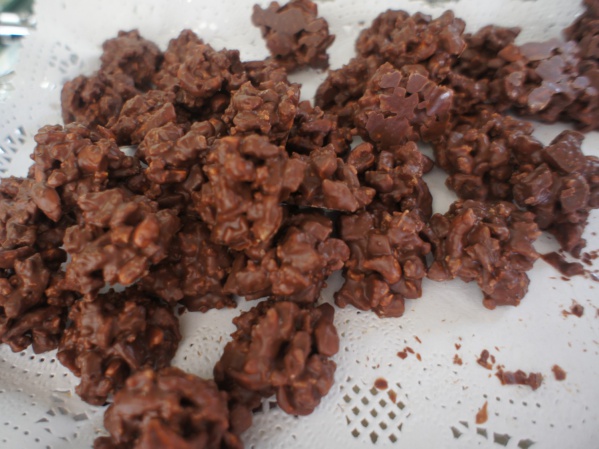
| ||
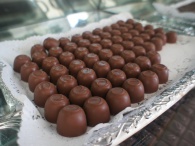
|
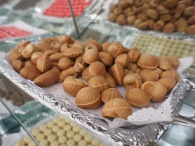
|
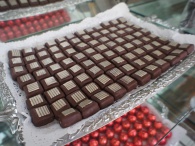
|
| Pralines sold at Robert's La Chocolatiére boutique in Antananarivo | ||
Madagascar has in fact a long history of chocolate production, dating back to the French colonial times, 1937 to be precise. In those days, Madagascar was a major cocoa exporter in supplying a metropolitan France. Today Madagascar's cocoa production is tiny in comparison to for example the Ivory Coast, which produces about 38% of the world's cocoa, while almost all cacao grown in Madagascar comes from an area about 50 kilometres in radius and represents less than 1% of the world's cocoa production. The cacao plantations can be found in the Sambirano region within the Ambanja district. The area is named after the Sambirano River which runs from the foothills of Madagascar's highest peak Maromokotro through the countryside and the Sambirano Valley and eventually into the Indian Ocean. Due to natural sesonal flooding of the river, the soil along the Sambirano riverbed and its surrounding cacao plantations become highly enriched with minerals and nutrients. Unlike cacao producing regions in most other countries, the Sambirano region is unique in that it yields cacao all year round. There are plenty of Criollo (the best cacao beans), Forastero (the most common variety) and Trinitario (a cross between Criollo and Forastero).
Most if not all cacao plantations in Madagascar are small family run farms, who have been growing cacao in a natural environment without the use of fertilisers or other mass farming methods for generations. And while slave labour is commonly reported in the cacao industry, especially in the Ivory Coast, it is not existing in Madagascar. Much of Sambirano's cacao trees stand on former fruit plantations dating back to the French colonial period. The resulting cocoa has strong hints of citrus fruit and is naturally sweet, which makes the cacao especially suitable for producing non-bitter dark chocolates without use of excessive sugar content or other additives. Furthermore, the final Madagascar chocolate product is usually rich in antioxidant flavoinoids and other healthy and reputedly aphrodisiac ingredients found in high proportions in pure Malagasy cacao.
Chocolaterie Robert and Cinagra are the only two bean-to-bar chocolate producers in Madagascar. Their chocolates are of single Malagasy origin, meaning they grow their own cacao as well as make their chocolates within Madagascar.
Chocolaterie Robert dates back to 1937, when a French couple, Mr and Mrs Robert, set up Madagascar's first chocolate factory in Brickaville. Today, Chocolaterie Robert's bars can be found everywhere in Madagascar, from small village shops to upmarket confectionery stores in metropolitan areas. In 2006 Chocolaterie Robert's Mora Mora and Sambirano brands respectively won the Chocolate Academy's Silver Cup and the Best Buy Ethical Award.
The more recently established Chocolaterie Cinagra has been making chocolate at their Antananarivo based factory since 2006, also using single origin cacao grown on plantations within the Sambirano region. In 2009 their 63% cocoa based Tsar bar won the first price at the Salon de Chocolat Paris in France. Since 2008, Cinagra produces chocolate for Madécasse - a US importer and brand, sold primarily in the US and Canada.
A third, smaller but nonetheless appreciated Madagascar chocolate brand is Chocolaterie Colbert. Although they do not buy and process cacao beans directly from farmers and can therefore not be classified a bean-to-bar producer, Colbert's recipes are their own and since they do buy processed cocoa from both Chocolaterie Robert and Cinagra, their final products are of single Malagasy origin. Colbert's highly priced range of pralines and chocolate bars is sold only at the Pâtisserie Colbert in Antananarivo, part of Hotel Colbert. Their bars and pralines, handmade and gift-wrapped by a small team of talented chocolatiers, are always fresh at the counter and make ideal presents for special occasions.
Madagascar is not a highly industrialised nation by any measure, including its farming methods. Malagasy cacao therefore remains relatively short in supply. Perhaps this is why Madagascar chocolates are not easily found in stores outside Madagascar. In fact, at the time of writing, chocolate made in Madagascar is only available in a few select stores in France, South Africa and Japan. A simple tip for anyone visiting the large island: Bring as many of Robert's, Cinagra's and Colbert's bars and pralines as possible with you back home, as you will not likely find as high quality chocolate at similar price levels elsewhere in the world!
Additional information
Visit the individual pages about the three Madagascar chocolate makers:
If you do not have the possibility to buy chocolate in Madagascar, there are various chocolate makers in other countries using Madagascar exported cocoa in their products. However, Madagascar cocoa based chocolates sold elsewhere are usually only found in specialised chocolate or gourmet stores which carry a wide range chocolate brands.
